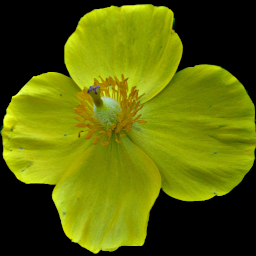This common weed often grows in vacant lots. The flowers are usually purple or pink, but a rare white form sometimes occurs.
American Italians call this plant cardone, or cardoon if you like a more Anglicized term, a valuable free vegetable whose stalks many Italian families gather in great quantities. The European Cardoon is a different plant, but it seems that the Burdock makes a good substitute. In Japan, the root is eaten as gobo. The next time you see a vacant lot filled with burdock, remember that you are seeing nothing less than a smorgasbord of free appetizers.
Gray describes the genus and the species:
ARCTIUM L. BURDOCK. Heads many-flowered; flowers all tubular, perfect, similar. Involucre globular; the imbricated bracts coriaceous and appressed at base, attenuate to long stiff points with hooked tips. Receptacle bristly. Achenes oblong, flattened, wrinkled transversely; pappus short, of numerous rough bristles, separate and deciduous. — Coarse biennial weeds, with large unarmed petioled roundish or ovate mostly cordate leaves floccose-tomentose beneath, and small solitary or clustered heads; flowers purple, rarely white. (Name probably from arktos, a bear, from the rough involucre.)
A. minus Bernh. (COMMON B.) Heads racemose or subracemose, 1.5-3 tm. broad; involucre glabrous or arachnoid; bracts shorter, more slender and more arcuate than in the preceding. (A. Lappa, var. Gray.) — Roadsides and waste places, too common throughout our range except on the northeastern borders where largely replaced by the preceding [A. lappa]. — Including A. Lappa, var. tomentosum Gray, a form differing only in its more or less arachnoid involucre, and apparently less marked or characteristic than the European A. tomentosum Mill. (Nat. from Eu.)
–
In Wild Flowers East of the Rockies (1910), Chester Albert Reed gives us a good description of this plant and its life:
BURDOCK (Arctium minus) (EUROPEAN) is a very common plant on waste ground, along roadsides and the edges of woods. The plant is often four feet or more high. The lower leaves are very large, often more than a foot in length, heart-shaped, deep green and finely veined above, greyish beneath because of the fine wool that covers the under surfaces. The upper leaves are smaller, more ovate in form and less densely woolly on the undersides. The flowerheads grow in clusters at the ends of the branches. The involucre is almost spherical,—composed of numerous bracts, each terminating in a sharp, hooked point. Tubular florets, only, are seated within this involucre; they are purple and white in color, and secrete an abundance of nectar, on which account they are frequented by honey bees.
We have seen how the Milkweed attaches to each of its seeds, a little parachute so it may fly away on the winds and found new colonies at a distance from the parent plants. We have also seen how the Beggar-tick and members of the Genus (Bidens) disperse their seeds by attaching them to the hair of animals or the clothing of man. The present species adopts the policy of the Beggar-ticks, but instead of single seeds, it attaches the whole bur-like head by means of its numerous little hooks. They cling tenaciously to everything they touch; doubtless most of my readers recall massing these burs together to make castles, funny men, animals, etc.
We have two species of this plant,—the present, and one slightly larger and with coarser leaves, (A. Lappa). Both of them are immigrants from across the water.







